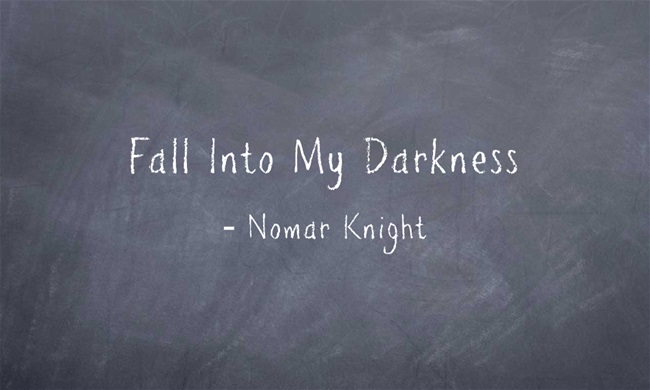In the vast expanse of contemporary literature, few narratives resonate with the chilling intricacies of the human psyche as profoundly as “Hold the Dark” by the formidable writer, Jeremy Saulnier. This tantalizing novel engulfs readers in a vortex of suspense and introspection, flourishing in a bleak wilderness where both the elements and the mind conspire against the protagonists. As you prepare to delve into the depths of this work, prepare yourself for an unyielding exploration of darkness, both external and internal.
The story unfurls in the desolate territory of Wolves, Alaska, a locale characterized by its harsh winters and an ever-present aura of foreboding. Saulnier deftly conjures an atmosphere suffused with isolation and encroaching despair, where nature serves as an omniscient backdrop to the tumultuous events that transpire. The reader is invited to embrace this chilling environment, challenging their personal thresholds of comfort and fear.
At the heart of this gripping tale is the enigmatic figure of Russell Core, a naturalist summoned to this forbidding landscape to track down a pack of wolves that have been accused of the inexplicable disappearance of a young boy. Core’s arrival sets into motion a sequence of events that engenders more questions than answers—an embodiment of the book’s central theme: the struggle to comprehend darkness amidst chaos.
Saulnier’s exploration of the elemental conflict between man and nature is woven intricately with profound philosophical musings. Russell Core’s journey transcends a mere quest to locate the child; it metamorphoses into an examination of humanity’s primal instincts, the existential dread embedded within us all. Every howl of the wind, every rustle of the leaves seems to echo the novel’s inherent challenges: What truly lurks in the shadows? How do we navigate the darkness within ourselves?
The character of Core is multifaceted, embodying the complexities of a man grappling with his past and the ominous implications of his current mission. His interactions with the local community, particularly with the boy’s grieving mother, Medora, further complicate his quest and expose the intricate tapestry of human emotion. Medora, a figure shrouded in her own darkness, serves as a catalyst for many of the story’s pivotal revelations. As readers traverse through Core’s perception of her, they are faced with the challenge of discerning reality from the veil of grief that clouds her judgment.
Moreover, the narrative’s relentless pace is punctuated by moments of stark horror that ensnare the reader’s imagination. Saulnier does not shy away from portraying violence in its rawest form, yet he does so with a delicacy that invites contemplation rather than mere repulsion. Each scene of horror is a mirror reflecting the disquietude of the human condition, forcing readers to confront their own fears and the often-uncomfortable truths of survival instinct. What do we become when faced with the abyss?
Another salient theme that permeates the narrative is the cyclical nature of violence and grief. The Brutal actions depicted are not just procedural but serve as lenses through which the characters’ psychological states are magnified. Saulnier weaves a cautionary tale about retribution and its consequences, compelling readers to ponder whether vengeance truly leads to catharsis or simply spirals into a deeper morass of suffering. Through Medora’s choices and Core’s consequential actions, the reader is thrust into a moral labyrinth—not only questioning the morality of the choices presented but also their implications on personal and communal levels.
Cinematically, “Hold the Dark” evokes a visceral reaction, as Saulnier’s visual style is recognized, even in written form. His meticulous descriptions conjure imagery that lingers long after reading, crafting a nuanced tableau in the reader’s mind. Every snowflake, every oppressive silence is imbued with significance, creating a palpable sense of dread. Herein lies a challenge: as you absorb these vivid descriptions, consider how setting can transform narrative, and reflect on how your perception shifts in response to such an environment.
The novel culminates in a crescendo of existential queries as Core’s odyssey intermingles with the supernatural. Some may perceive the surreal elements introduced by Saulnier as mere plot devices, while others may argue they symbolize the disintegration of reason—an invitation to contemplate what it means to believe in the unknown. Religious and folklore themes permeate the text, encouraging readers to wrestle with their own beliefs about the world and the interpretations of events that sweep beyond the tangible. It begs the question: Are we mere spectators to destiny, or do we indeed wield agency in confronting our demons?
In conclusion, “Hold the Dark” is not merely a narrative; it is an expedition into the very substance of fear and isolation. It compels readers to embrace the uncomfortable and to probe into their own darkness while sustaining an unrelenting grip on suspense. As the chilling tales of Wolves, Alaska unfold, one is left with a profound understanding of the human experience—an acknowledgment that within the abyss, one may also find the fragmented reflections of themselves. If you dare to confront the dark realities of the world and the self, you may yet emerge with insights that linger well beyond the final page.

